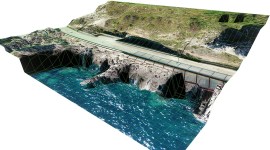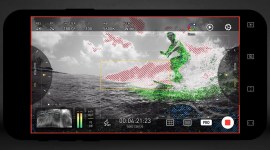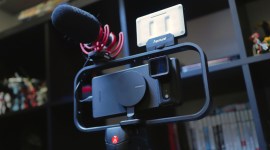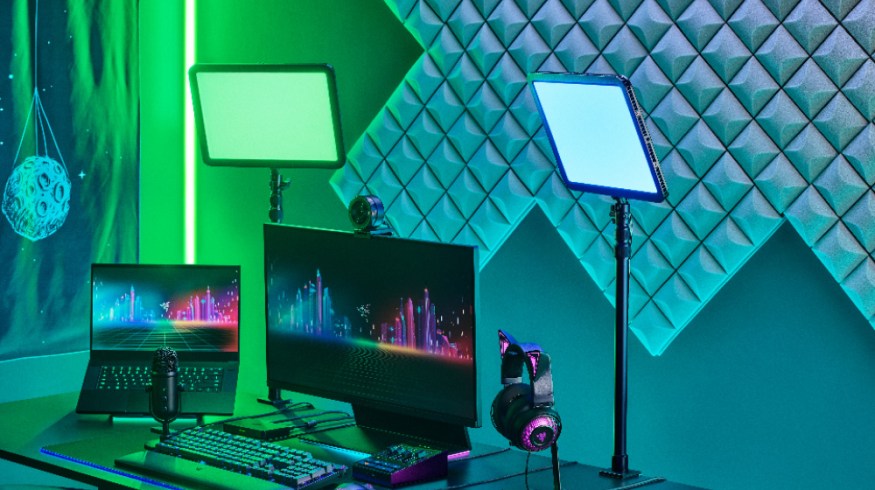
Versatile and Adjustable: Razer Key Light Review
Razer’s Key Light is low-maintenance and versatile, which can serve any video creator well. But, it may be too similar to its nearest competitor.
No better example epitomizes Razer’s ongoing streaming tech initiative than the Razer Key Light. It works great out of the box and requires minimal setup or maintenance. Additionally, the Key Light can be activated with either the Razer Streaming app on smartphones or the Synapse app on PC.
Thanks to the included clamp mount and the removable ball joint attachment, the light is versatile enough to set up on most desks for streaming, or it can fit on a tripod for video projects in a studio.
Unlike the other products that launched alongside the Key Light, this one gave me minor trouble and was the most useful across projects like talking head videos, product photography, or mood lighting.
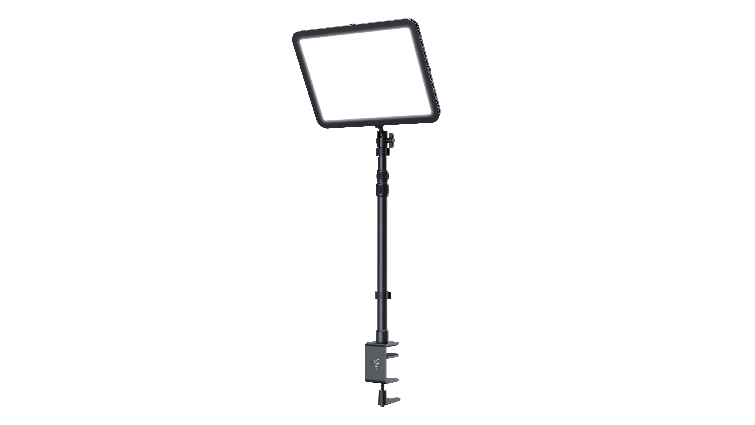
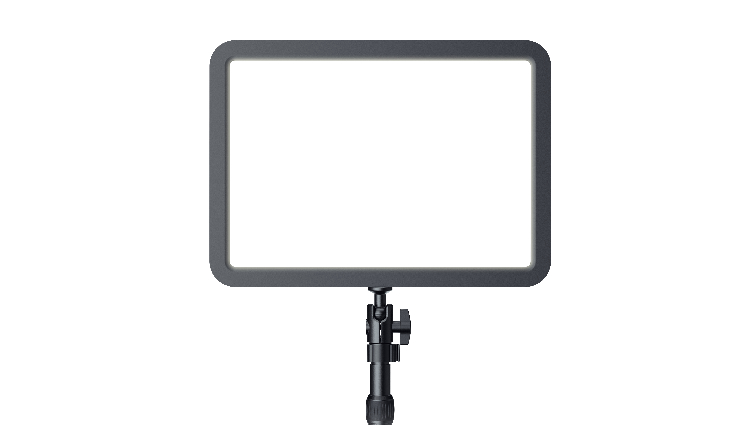
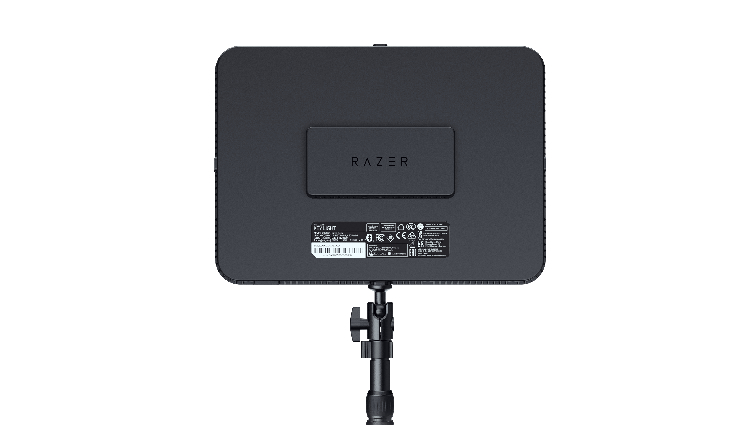
If it looks familiar, that’s because this is another Razer product bearing a striking resemblance to a competitor’s development. Still, unlike the Audio Mixer or Seiren BT, the Key Light brings something new: Chroma RGB.
However, going that extra mile raises the price of the Key Light to $300, giving up a considerable advantage to its nearest competitor, which costs $100 less and is nearly identical. For some, paying more for Chroma RGB will be worth it—for others, it won’t.
All-in-One Lighting Solution
The Razer Key Light is square-shaped with rounded edges. It’s relatively thick, with vents along the back and a single on/off switch. The Key Light comes with a mount that’s essentially Elgato’s Master Mount System. It looks and works the same, though Razer’s clamp does open just a little more.
Also included is a 52.5W power adapter with a long enough cord for most setups. The ball joint mount can be removed and installed onto a tripod with a 1/4″ -20 mount, making it a go-to light for small studio setups.
The light itself is rated 2800 Lumens, but that’s just a number. Instead, here’s an anecdote to illustrate how bright that is . . .
If you’re staring directly at the Key Light, as I stupidly did when I turned it on, it’ll blind you temporarily. With a brightness slider between 0-100%, I found that setting it from 50% to 75% in a dark room did wonders. It also prevented possible eye damage—I hope.
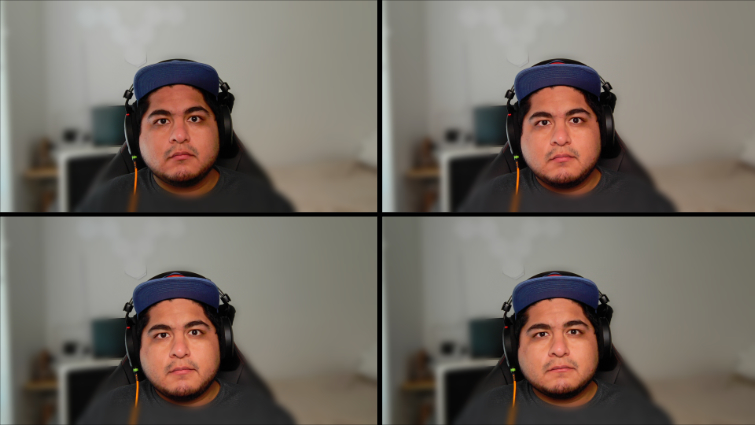
The Razer Key Light also has a color temperature adjustment slider between 3000K to 7000K. That’s useful because it lets you change the temperature of the light to either match the natural light in your environment or create a lighting environment that’s ideal for your creative vision.
At 3000K, the light will emit a warm light with rich orange and red tint. At 7000K, the light will emit a very cool light with a heavy blue tint.
Ideally, for a natural light look that’s closer to the white light you get around noon, you want to start with 5000K as the default.
In the golden light of the early morning or late evening, also known as the “golden hour,” you can shift the slider to the warmer side. Alternatively, moving the slider to the cooler side will work better on gloomy, overcast days.
RGB Features
Adjustable color temperature is a nice feature since you won’t need to buy separate lights for warm or cool lighting, but it’s not unique. What is unique is the addition of Razer Chroma RGB to the Key Light.
You can adjust the color within either app to create a stylized lighting environment. This light makes sense if you’ve got multiple Razer Chroma RGB products since you can sync all the lights to the same effect. You can even sync various Razer Key Lights, which opens the door for a multi-light setup down the road.
RGB is how Razer differentiates its key light from Elgato’s Key Light and why it charges $100 more. But, it’s not the same RGB I’m used to in other Razer products. Rather than inserting cosmetic RGB that’s exceptionally bright but used in thin strips or accents around a device, the Razer Key Light’s RGB is for practical purposes, not purely aesthetic ones.
The result is LED lights that are much softer than your standard RGB home lights, such as those from Nanoleaf or Phillips Hue. RGB LEDs that are too vibrant can destroy facial details and make it nearly impossible to do color correction.
However, using Chroma RGB limits the overall brightness of the Key Light, capping it at 15 to, as mentioned in the software, “guarantee the optimal visibility of each Chroma effect.”
While it’s not the biggest deal-breaker, it does hold back the light from being used on other projects.

I appreciate the option to use RGB lighting, but I don’t use it that much. Having a colored light doesn’t play much unless I have a specific reason for doing a video. I could see it getting used for heavily stylized product photography like what you see in ads, but I shoot product photography in a more realistic light and keep edits to a minimum. In other words, it’s just too circumstantial for my needs.
Too Rich for My Blood
Out of the three streaming products that Razer sent me, the Key Light showed the most promise and gave me the least amount of hassle. I plugged it in, and it worked without issue.
While I didn’t use it to stream, I did point it down when building Gundam figures, and I used it on Zoom calls and on a few personal video projects that I’ve been working on.
It blew away the portable light I use on my camera, the Aputure Amaran AL-M9, allowing me to keep a relatively low ISO that vastly improved my video quality. I also appreciate how easily I could change the temperature, brightness, and even color of the light via my phone.
If both Razer’s and Elgato’s Key Lights had cost the same, the choice would come down to whether you need, or want, RGB lights. But that’s not the case. Elgato’s light is $100 cheaper and, besides the Chroma RGB, does everything Razer’s Key Light does.
The Elgato Key Light is also compatible with the brand’s Stream Deck products, such as the Stream Deck Pedal, which gives users the ability to control the light via buttons or pedals. You could switch the light on or off at a moment’s notice or dim, brighten, and adjust the light’s color temperature. Now, that I could use.
Whether it’s because of corporate rivalry or software incompatibility, Razer’s Key Light isn’t compatible with Stream Deck products. What a shame.
While the Razer Key Light is a solid product, the existence of a nearly identical, cheaper, and more functional product is its biggest weakness.
A few more must-reads for you:
- Selling Expensive Gear Online? Resale Outlets May Be Your Friend
- Essential Gear You Need to Start Your Own Production Company
- HyperX QuadCast S Review: I Needed This Upgrade
- Affordable Field Recorders for Filmmakers
- The Filmmaker’s Guide to the Apocalypse
Cover image via Razer.

